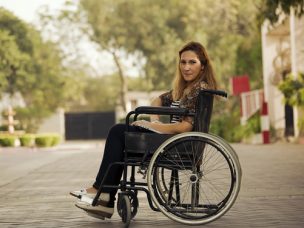Condition Center
The Many Complications Faced by Patients With Atopic Dermatitis
Atopic dermatitis (AD) can be complicated by infections, allergic and nonallergic comorbidities and quality of life impairments. Understanding the severity of the disease and its comorbidities and how it affects vulnerable populations is important for clinicians who encounter AD. AD is an inflammatory, relapsing skin disease that follows a chronic, relapsing course and is characterized...
Challenges Among Women & Minorities With Multiple Sclerosis
A lack of diverse representation of patients in clinical research has made it difficult to adequately assess the unique patient journey and efficacy of treatment for minority MS patients in comparison to non-Hispanic Caucasian women. According to a recent study published earlier this year in Multiple Sclerosis and Demyelinating Disorders. The African-American population in...
Atopic Dermatitis More Severe in African Americans & Asians
Clinicians should be aware of the differing severity and presentation of atopic dermatitis (AD) in African Americans. The frequency of atopic dermatitis is increasing, and is more common among Blacks, Asians, and Pacific Islanders. [Desai 2009] In fact, eczema is the second most frequent skin disease in African Americans. [Silverberg 2013] In the US, African...
Over 18 Million Adults Have Atopic Dermatitis. How Does It Affect Your Patients?
Atopic dermatitis (AD) is a chronic inflammatory skin disease with a usual onset in infancy. While the disease primarily presents during childhood, over 18 million American adults have atopic dermatitis. In the US, African American children have a higher prevalence of AD (20% as compared to 16% among Caucasians) and are also 6-times more likely...
Study Finds Racial Disparities In Treatment of Multiple Myeloma Patients
Source: www.BloodJournal.com Compared with whites, African Americans and Hispanics receive treatment later and with higher associated costs (WASHINGTON, October 17, 2019) — Among patients with multiple myeloma, African Americans and Hispanics start treatment with a novel therapy significantly later than white patients, according to a new study published today in Blood Advances. The study found...
ACA & Diabetic Eye Exams
Diabetic retinopathy (DR) is a common complication of diabetes mellitus (DM). It is the most common cause of acquired blindness in adults, despite all the recent innovative treatments for DM. A large epidemiologic study found evidence of DR in 40% of adults with DM and in 3.4% of the general US population.1 Early identification can...
Sickle Cell & PTSD Predictor in Healthcare disparity
Posttraumatic Stress Disorder (PTSD) is a psychiatric disorder that occurs in people who have experienced a personal assault or who have witnessed a traumatic event. The exposure to an upsetting traumatic event can be indirect rather than first-hand such as of learning of a violent death of a close family member. In Sickle Cell Anemia...
Gene Therapy, Next Up For Sickle Cell Disease?
Sickle Cell Disease has been at the forefront of inherited disorders that have been studied to determine the exact gene mutation. When Geneticists discovered the mutation on the Hemoglobin-Beta gene on Chromosome 11 causes Sickle Cell Disease, this information was mostly used to counsel persons who carry the trait regarding the need for genetic testing...
Global Policy: What You Need To Know About Sickle Cell Disease
Sickle Cell Disease (SCD) affects persons whose ancestors come from sub-Saharan Africa; Spanish-speaking regions in the Western Hemisphere (South America, Central American and the Caribbean); Mediterranean countries such as Turkey, Greece, and Italy; India and Saudi Arabia. In the United States, 1 in 13 African American babies is born with Sickle Cell Trait (SCT) wherein...
More Medical News














